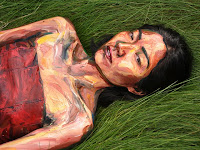This introductory scene to director Lauren Greenfield’s documentary, “The Queen of Versailles,” sets up the conflicting emotions that arise throughout the film. It first associates self-prescribed royalty to the Siegel family, while Jackie’s final comment warns how billionaire time-share mogul David Siegel eventually fails. The soft, enchanting piano music playing throughout the posh scene adds a feeling of monarchal power.
People enjoy watching powerful people fail. Just as we had a strange fascination when Brittney Spears broke down and shaved her head, seeing David’s company fall apart after the 2008 recession and watching the cocky, self-aggrandizing man struggle brings a strange joy and satisfaction.
Instead of feeling solely satisfaction at the gradual demise, however, Greenfield also creates pity for the dysfunctional family. Greenfield juxtaposes certain images and scenes to create doubt over what is right and what constitutes normal. One scene, for example, shows the family seated around the dinner table for their father’s birthday, David on his cell and disconnected. Immediately after however, you see David’s 90,000 square-foot dream-house falling apart and desolate, and you pity him as he watches his dream crumble.
By the end of the film you can’t decide what to feel. You are sick of the children because of their lack of respect and responsibility, yet you pity them because they must deal with a disconnected and ungrateful father. You hate narcissistic David for disrespecting his family, yet you pity him for watching helplessly as his lifelong work and dreams fail. You are infuriated with Jackie because of her vanity and inability to stand up to David, yet you pity her because she loves a husband who doesn't love her back.
Greenfield tells the story she wants to tell. She builds the family’s sense of royalty and excessive materialism through camera angles and sound to make the Siegel's failure even more enjoyable. She juxtaposes scenes and images in order to draw attention to humanistic aspects of a ridiculous rich family most would never even consider.
By the end of the film you can’t decide what to feel. You are sick of the children because of their lack of respect and responsibility, yet you pity them because they must deal with a disconnected and ungrateful father. You hate narcissistic David for disrespecting his family, yet you pity him for watching helplessly as his lifelong work and dreams fail. You are infuriated with Jackie because of her vanity and inability to stand up to David, yet you pity her because she loves a husband who doesn't love her back.
Greenfield tells the story she wants to tell. She builds the family’s sense of royalty and excessive materialism through camera angles and sound to make the Siegel's failure even more enjoyable. She juxtaposes scenes and images in order to draw attention to humanistic aspects of a ridiculous rich family most would never even consider.


















